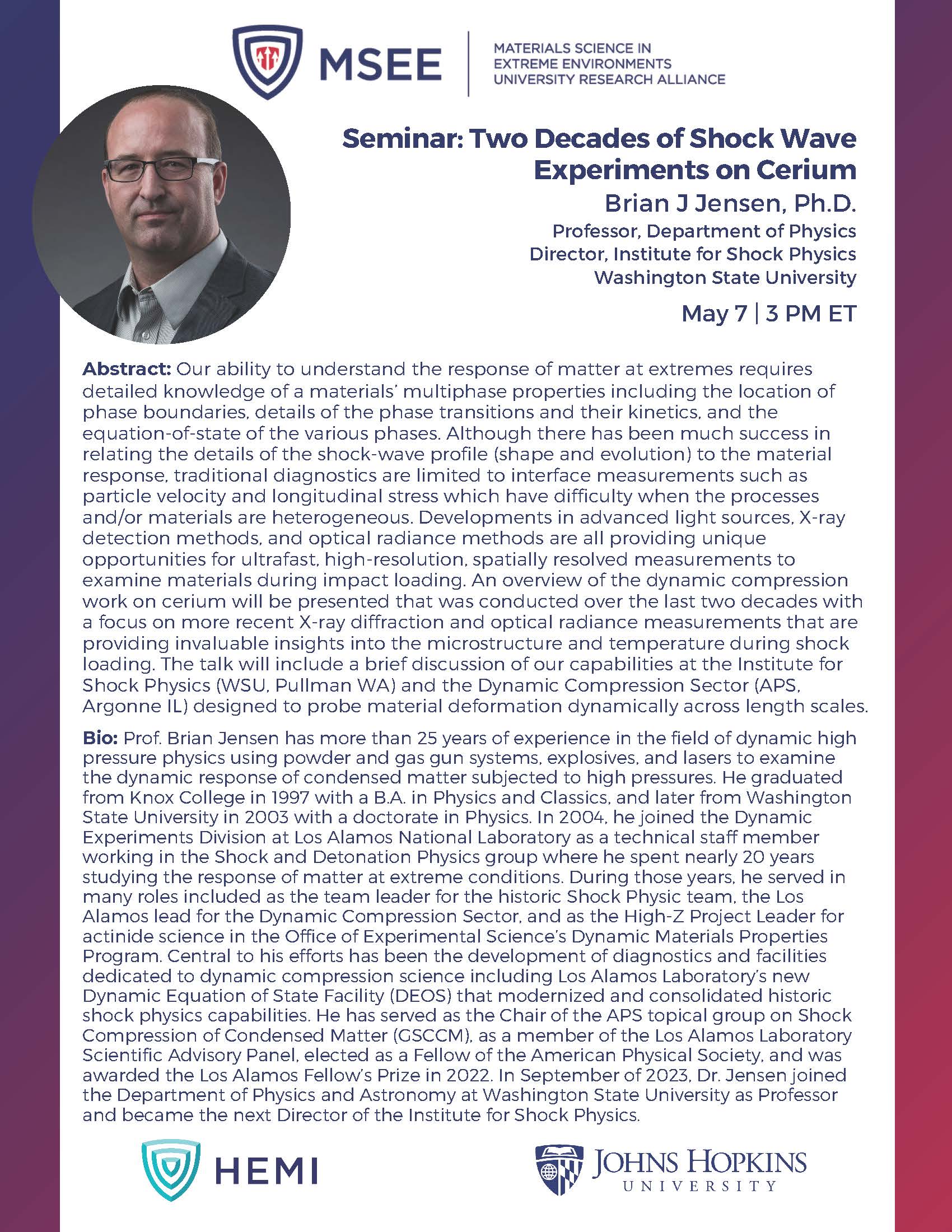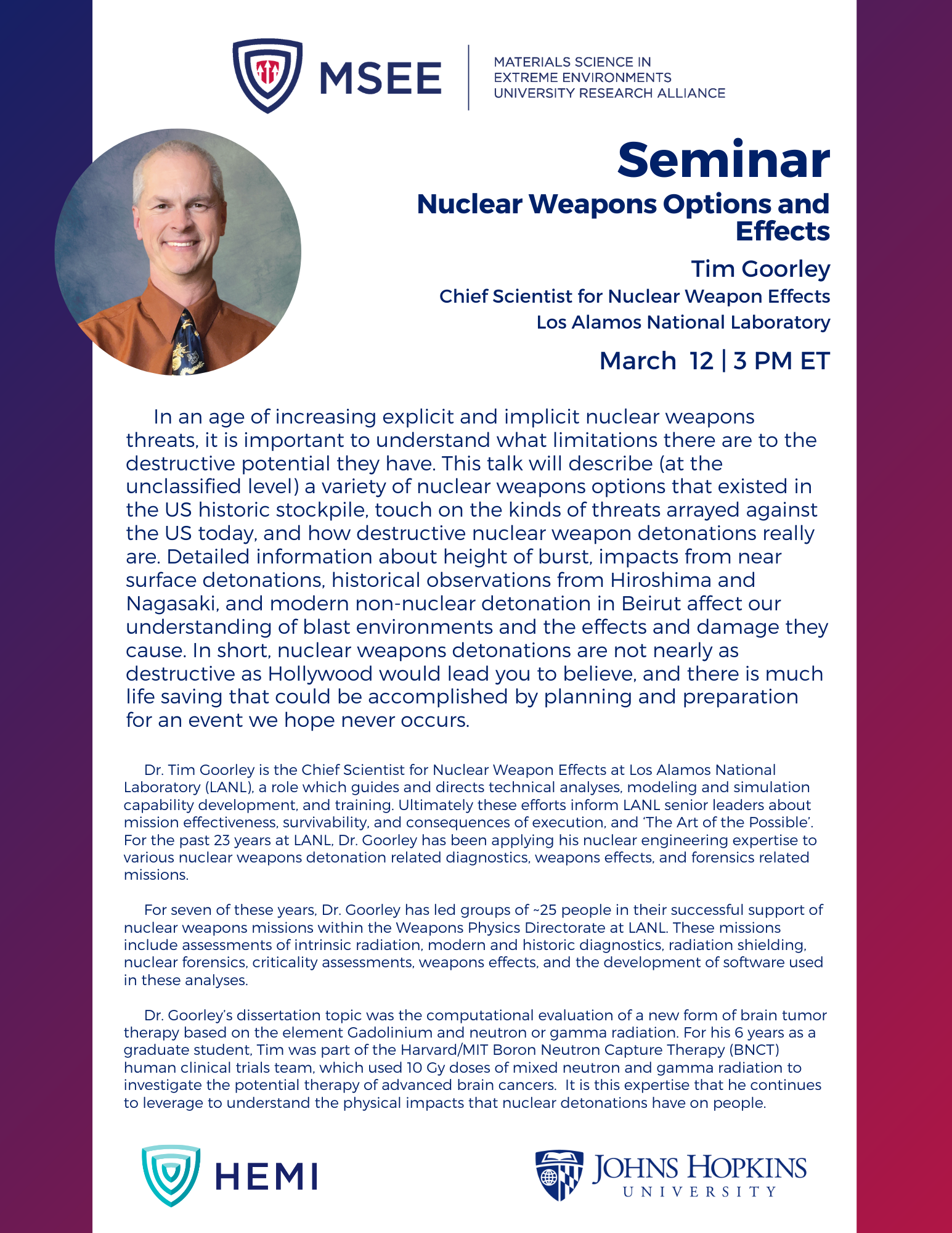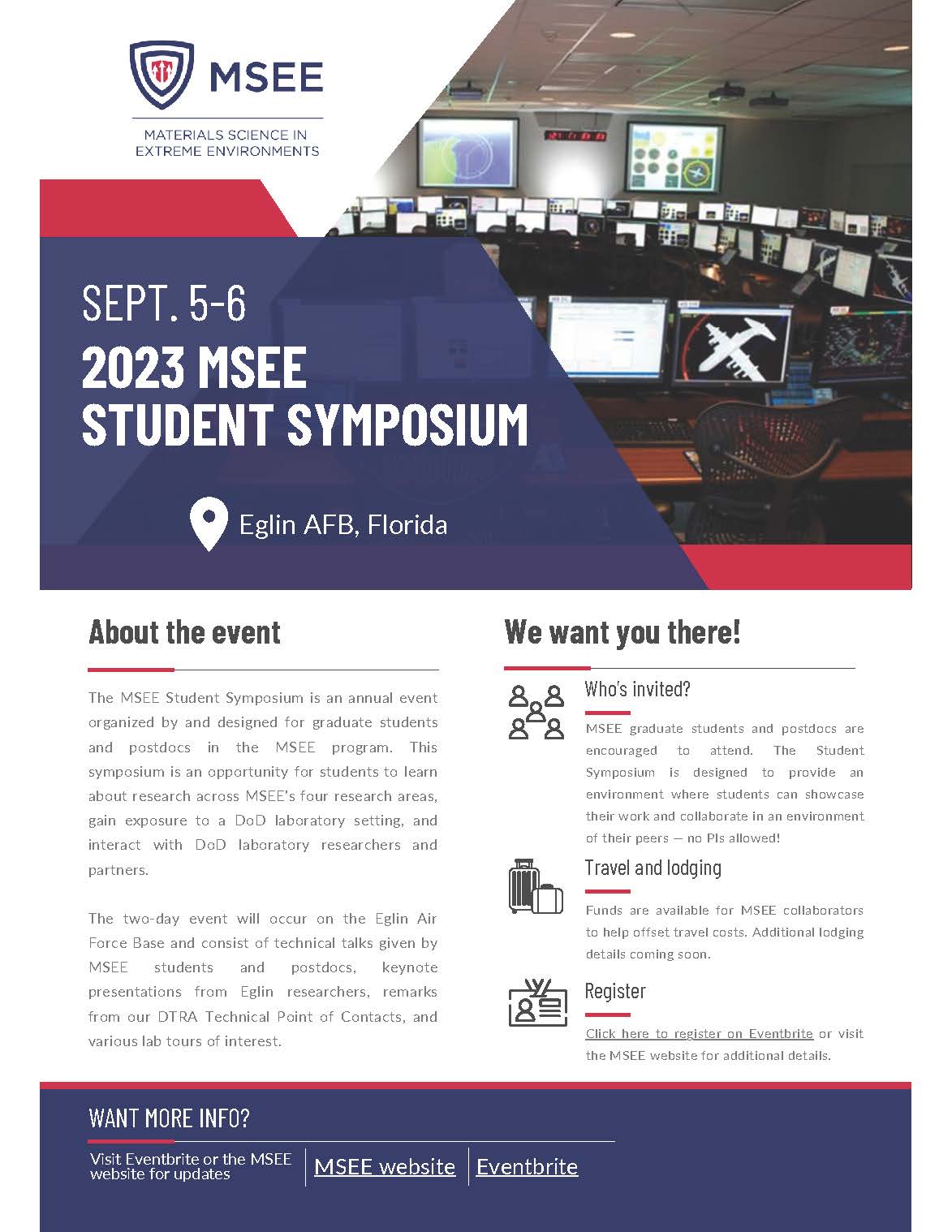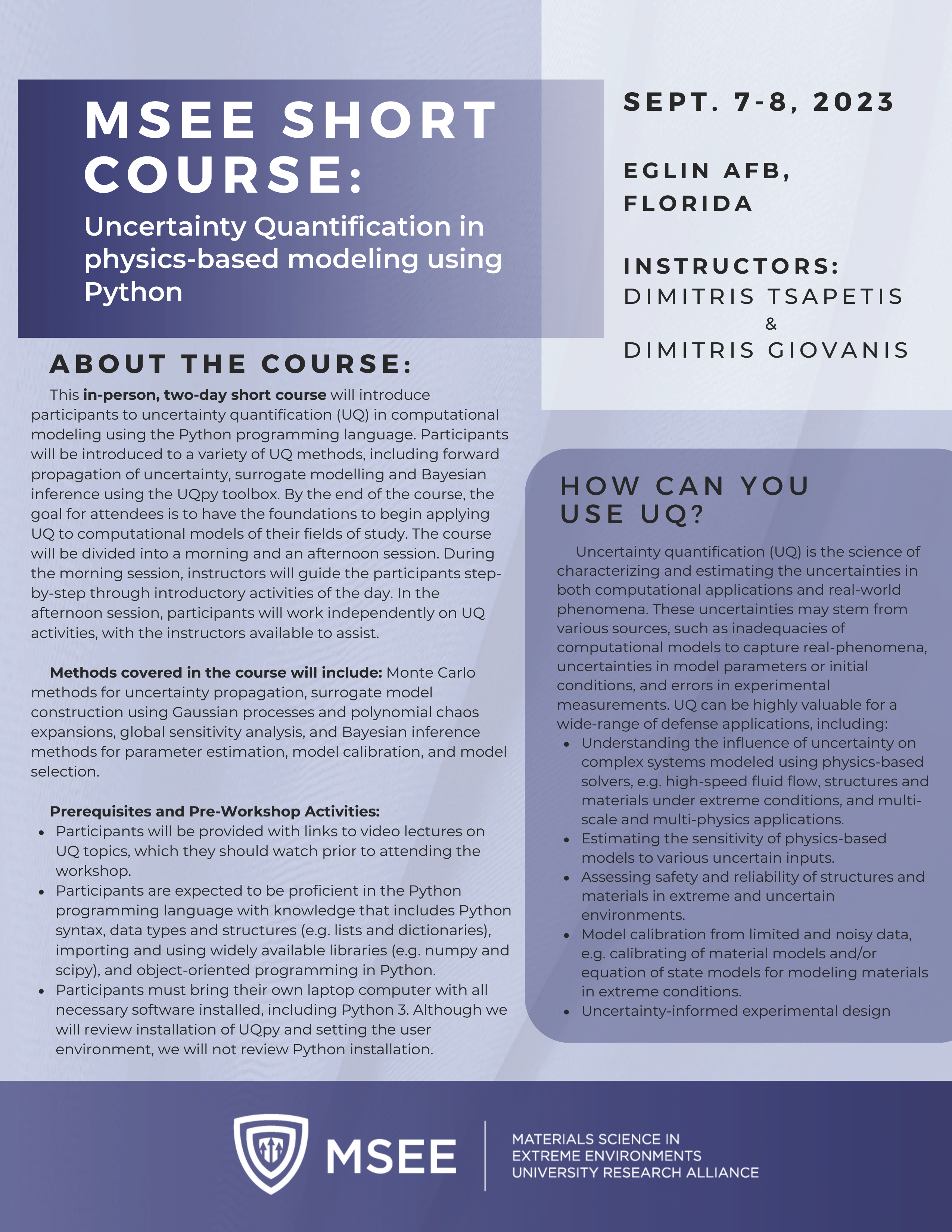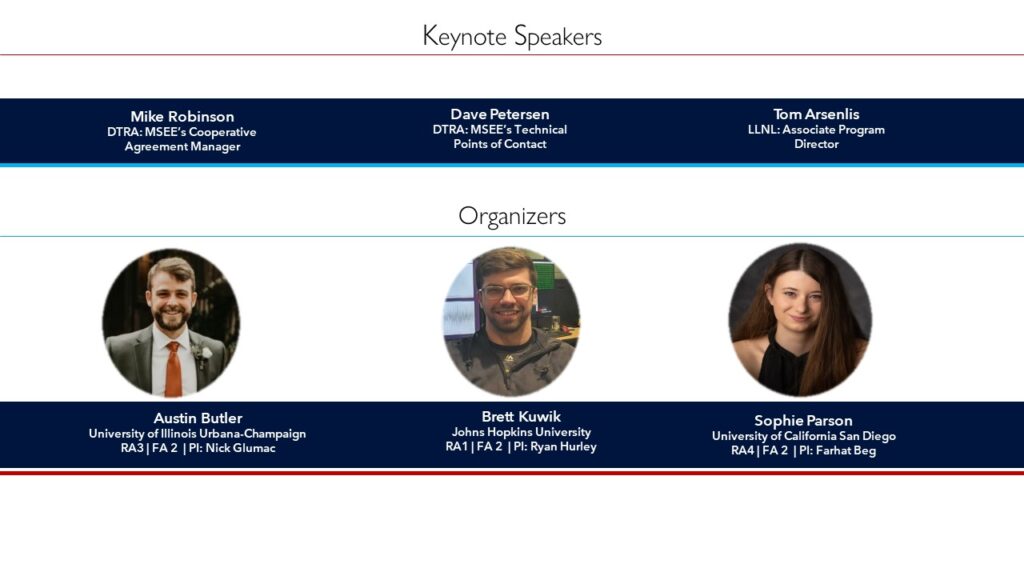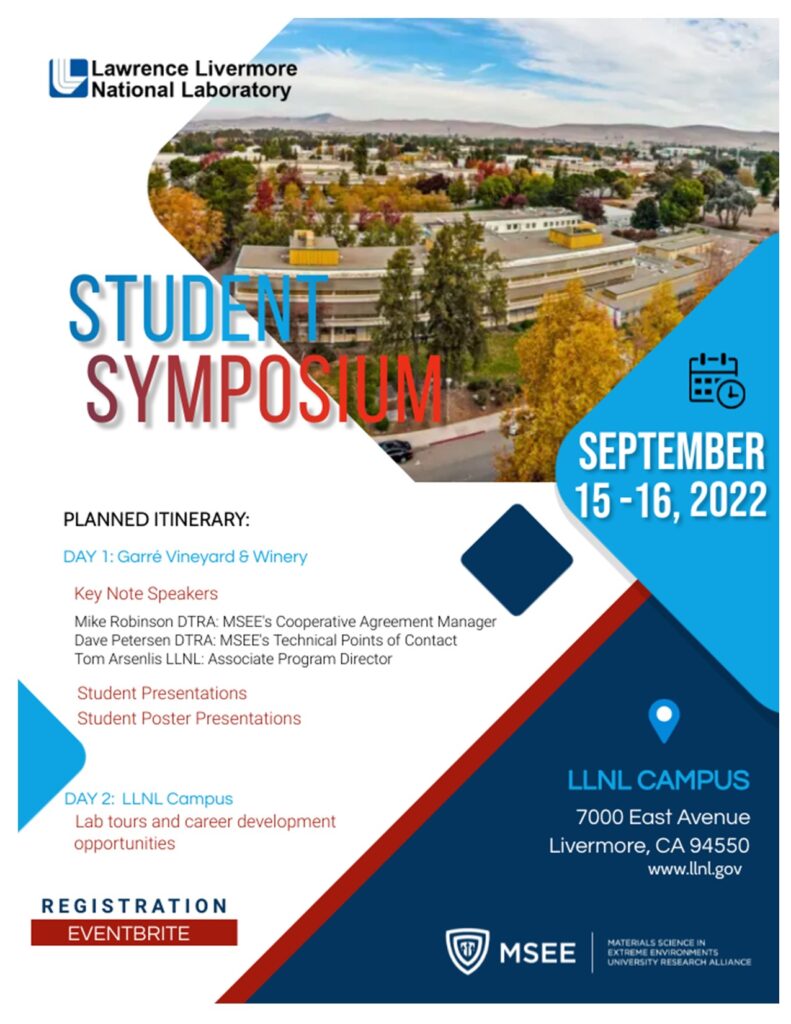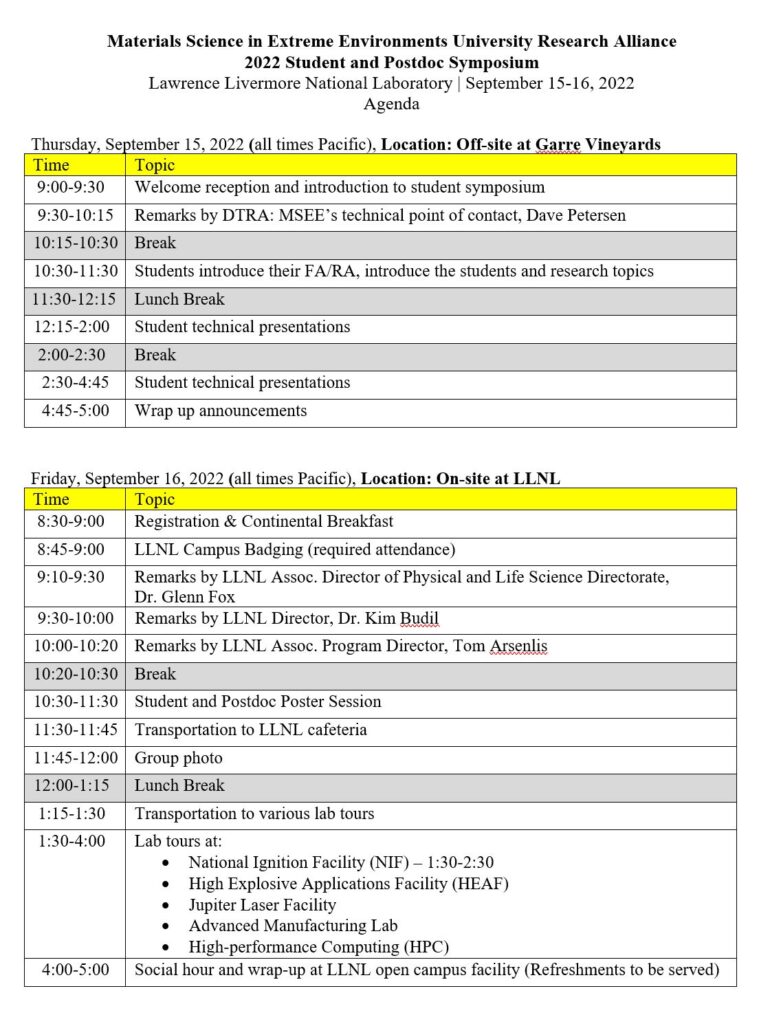For more information about this event, please visit the event website here.
June 23-24, 2025At a time when the potential use of chemical, biological, radiological, and nuclear weapons is of increasing concern, efforts to reduce risk take on increased urgency. Basic and applied scientific research programs have important roles to play in facilitating risk reduction and nonproliferation efforts, for example through the development of improved technologies to verify compliance with negotiated agreements.
This forum, hosted by Johns Hopkins University, will bring together science and policy experts. Topics include verification and monitoring, counter-WMD technologies, and mitigation of WMD effects, and role of emerging technologies such as artificial intelligence in risk reduction. The forum will feature plenary talks by subject matter experts and policymakers, panel discussions, and extensive opportunities to discuss the importance of scientific advances in support of risk reduction policy.
The Risk Reduction Science and Policy Forum is offered by Johns Hopkins University, in collaboration with the Materials Science in Extreme Environments University Research Alliance (MSEE URA), which is supported by the Defense Threat Reduction Agency.
ORGANIZING COMMITTEE:- Prof. Gigi Gronvall, Sr. Scholar, Center for Health Security, Bloomberg School of Public Health
- Prof. Todd Hufnagel, Assoc. Director, MSEE URA, Whiting School of Engineering
- Prof. Jane Vaynman, Asst. Prof. of Strategic Studies, School of Advanced International Studies
- Prof. Tim Weihs, Director, MSEE URA, Whiting School of Engineering
Car
We’re located at 555 Pennsylvania Ave., NW Washington, D.C. 20001. Input our address into your GPS and follow the directions. Paid street parking is available and several parking garages are located within walking distance of our building.Metro
Our building is a short walk from five different metro stations, accessed best by the Red, Yellow, Orange and Green lines.- Archives Navy Memorial-Penn Quarter Station (Green and Yellow Lines) — 4-minute walk
- Gallery Place-Chinatown Station (Green, Yellow and Red Lines) — 12-minute walk
- Federal Triangle Station (Blue, Orange and Silver Lines) — 13-minute walk
- L’Enfant Plaza Station (Orange, Blue, Silver, Green and Yellow Lines) — 13-minute walk
- Judiciary Square Station (Red Line) — 14-minute walk
Bus
The 32, 33, 36, 70, and P6 bus routes pass by our location. Several bus stops are located within walking distance of our main entrance.Train
Amtrak, MARC, and VRE riders can take the train to Union Station and walk about 20 minutes to our building. You can also transfer to a bus or the metro.Airplane
We’re located 20 minutes from Ronald Reagan Washington National Airport and about an hour from Dulles International Airport and Baltimore/Washington International Thurgood Marshall Airport. Traffic in Washington D.C. can be unpredictable, so be sure to plan accordingly. POINT OF CONTACT If you have a question or need to speak with a member of the MSEE team, please contact us at mseeura@jhu.edu.Workshop on Applied Machine Learning and Computer Vision for Automated Analysis
- Day 1:
- Lecture 1: Introduction to DCNNs
- Lecture 2: Object detection
- Lecture 3: Object segmentation
- Day 2:
- Lecture 4: Generative AI
- Lecture 5: Image restoration
- Lecture 6: Latest applications in AI
2024 MSEE Student Symposium
- Day 1: Off-site for all participants at Water's Edge Events Center. 4687 Millennium Dr, Belcamp, MD 21017
- Day 2: On-site for US Citizens ONLY at DEVCOM CBC. (Additional details of gathering for other participants TBD)
The MSEE Student Symposium is an annual event organized by and designed for graduate students and postdocs in the MSEE program. This symposium is an opportunity for students to learn about research across MSEE's four research areas, gain exposure to a DoD laboratory setting, and interact with DoD laboratory researchers and partners.
This two-day event will occur at the U.S. Army Combat Capabilities Development Command Chemical Biological Center (DEVCOM CBC) and consist of technical talks given by MSEE students and postdocs, keynote presentations from DEVCOM CBC and Army Research Laboratory researchers, and various lab tours of interest.
Full agenda details coming soon! LODGING Several lodging options are available in the area. These include the Inn at the Colonnade, The Study at Johns Hopkins, and others.2024 Annual Technical Review
- A professional development networking session led by former Acting and Deputy Director of DTRA, Major General Randy Manner. This professional development session is only available to MSEE students and postdocs. Additional details can be found here. Professional Development Session Details
- A networking session open to all other ATR attendees with opportunities for breakout groups by Research Area and Focus area.
MSEE Seminar: Brian J. Jensen
The seminar will begin at 3:00 PM ET on Tuesday, May 7, 2024.
Please contact Sarah Preis for connection information.
Abstract: Our ability to understand the response of matter at extremes requires detailed knowledge of a materials’ multiphase properties including the location of phase boundaries, details of the phase transitions and their kinetics, and the equation-of-state of the various phases. Although there has been much success in relating the details of the shock-wave profile (shape and evolution) to the material response, traditional diagnostics are limited to interface measurements such as particle velocity and longitudinal stress which have difficulty when the processes and/or materials are heterogeneous. Developments in advanced light sources, X-ray detection methods, and optical radiance methods are all providing unique opportunities for ultrafast, high-resolution, spatially resolved measurements to examine materials during impact loading. An overview of the dynamic compression work on cerium will be presented that was conducted over the last two decades with a focus on more recent X-ray diffraction and optical radiance measurements that are providing invaluable insights into the microstructure and temperature during shock loading. The talk will include a brief discussion of our capabilities at the Institute for Shock Physics (WSU, Pullman WA) and the Dynamic Compression Sector (APS, Argonne IL) designed to probe material deformation dynamically across length scales.
Bio: Prof. Brian Jensen has more than 25 years of experience in the field of dynamic high pressure physics using powder and gas gun systems, explosives, and lasers to examine the dynamic response of condensed matter subjected to high pressures. He graduated from Knox College in 1997 with a B.A. in Physics and Classics, and later from Washington State University in 2003 with a doctorate in Physics. In 2004, he joined the Dynamic Experiments Division at Los Alamos National Laboratory as a technical staff member working in the Shock and Detonation Physics group where he spent nearly 20 years studying the response of matter at extreme conditions. During those years, he served in many roles included as the team leader for the historic Shock Physic team, the Los Alamos lead for the Dynamic Compression Sector, and as the High-Z Project Leader for actinide science in the Office of Experimental Science’s Dynamic Materials Properties Program. Central to his efforts has been the development of diagnostics and facilities dedicated to dynamic compression science including Los Alamos Laboratory’s new Dynamic Equation of State Facility (DEOS) that modernized and consolidated historic shock physics capabilities. He has served as the Chair of the APS topical group on Shock Compression of Condensed Matter (GSCCM), as a member of the Los Alamos Laboratory Scientific Advisory Panel, elected as a Fellow of the American Physical Society, and was awarded the Los Alamos Fellow’s Prize in 2022. In September of 2023, Dr. Jensen joined the Department of Physics and Astronomy at Washington State University as Professor and became the next Director of the Institute for Shock Physics.
MSEE Seminar: Dr. Tim Goorley
The seminar will begin at 3:00 PM ET on Tuesday, March 12, 2024.
Please contact Sarah Preis for connection information.
Bio: Dr. Tim Goorley is the Chief Scientist for Nuclear Weapon Effects at Los Alamos National Laboratory (LANL), a role which guides and directs technical analyses, modeling and simulation capability development, and training. Ultimately these efforts inform LANL senior leaders about mission effectiveness, survivability, and consequences of execution, and ‘The Art of the Possible’. For the past 23 years at LANL, Dr. Goorley has been applying his nuclear engineering expertise to various nuclear weapons detonation related diagnostics, weapons effects, and forensics related missions.
For seven of these years, Dr. Goorley has led groups of ~25 people in their successful support of nuclear weapons missions within the Weapons Physics Directorate at LANL. These missions include assessments of intrinsic radiation, modern and historic diagnostics, radiation shielding, nuclear forensics, criticality assessments, weapons effects, and the development of software used in these analyses. Dr. Goorley’s dissertation topic was the computational evaluation of a new form of brain tumor therapy based on the element Gadolinium and neutron or gamma radiation. For his 6 years as a graduate student, Tim was part of the Harvard/MIT Boron Neutron Capture Therapy (BNCT) human clinical trials team, which used 10 Gy doses of mixed neutron and gamma radiation to investigate the potential therapy of advanced brain cancers. It is this expertise that he continues to leverage to understand the physical impacts that nuclear detonations have on people.
